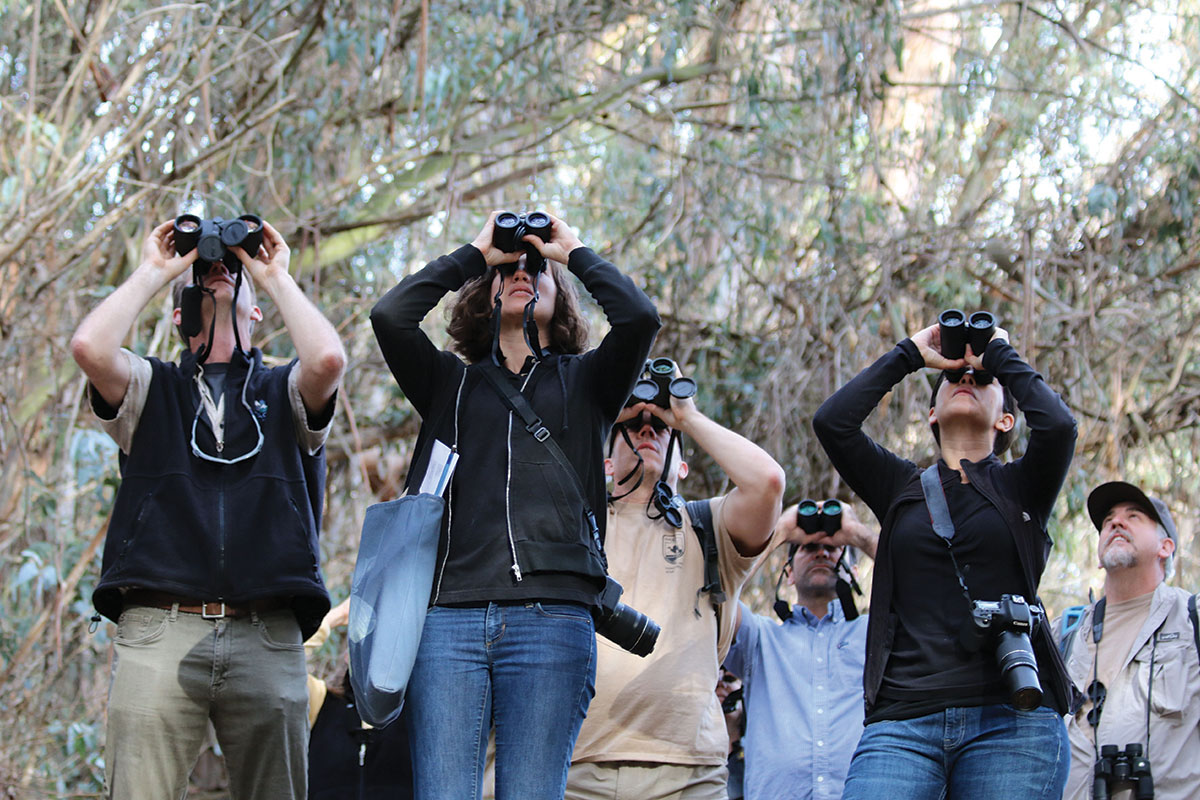I have a confession to make. I’m one of the challenges to the continued success of the North American Model of Wildlife Conservation that you’ve been reading about in these pages. The grandson of an avid hunter and son of a lifelong fisherman, I’m an urban-dwelling vegetarian with no interest in either activity. To put it bluntly, I’m not even one of the “swing voters” that Brian Yablonski appeals to earlier in this issue.
Yet there’s an inherent irony to being a non-hunting conservationist. The benefits I receive from viewing wildlife—or simply knowing wild animals exist—are due, in significant part, to conservation efforts undertaken or funded by hunters and anglers.
Hunting has been critical to the North American Wildlife Model, as both a management tool and source for conservation funding. As the number of hunters continues to shrink, as it has for decades, how will we continue to pay for the wildlife you and I enjoy?
Fortunately, the decline in hunting does not reflect a decline in our interest in wildlife. The same U.S. Fish and Wildlife Service survey that found the ranks of hunters has declined by 16 percent from 2011 to 2016 also found a 20 percent increase in the number of people engaged in wildlife watching. Can these and other non-hunting conservationists be incorporated into the model?
One obvious difficulty is that we non-hunters cannot be excluded from the wildlife benefits we enjoy as easily as hunters can. By requiring hunters and anglers to purchase a license or permit, sportsmen can’t hunt or fish without paying into the conservation coffer.
But how do you effectively exclude people from observing wildlife in their own neighborhoods or in public spaces? Or, to make the challenge even harder, how do you reach people who primarily enjoy wildlife for its existence value—the joy of simply knowing that there are wild bears and caribou in Alaska even though they may never see them?
Assigning a value to these non-use benefits is difficult, but we can be reasonably confident that it is a large number. In 2016, Americans spent $75 billion on wildlife watching, compared to just $26 billion that was spent on hunting. But, due to license fees and taxes levied on hunting equipment, the latter contributed more to conservation.
Markets can help incorporate conservationists like me into the model by empowering us to express our values while also contributing directly to conservation. Consider the response to Wyoming’s planned grizzly hunt after the Greater Yellowstone Ecosystem grizzly was declared recovered under the Endangered Species Act—a determination which is the subject of ongoing litigation. Outraged, non-hunting conservationists from the “Shoot ‘em With a Camera—Not a Gun” campaign sought hunting tags with no intention of using them. Their aim, instead, was to block someone else from harvesting a bear.
The rallying cry for this effort was that grizzlies are worth more alive than as trophies. I tend to agree, but the true test would be to allow hunters and non-hunters to bid against each other. Competitive bidding would not only reveal these values but would also generate revenue to fund additional conservation efforts.
Markets can help incorporate conservationists like me into the model by empowering us to express our values while also contributing directly to conservation.
It would also allow more of us to contribute to management efforts that could reduce the unintended side effects of abundant wildlife populations. As Jim Sterba and Tate Watkins describe elsewhere in these pages, the North American Wildlife Model has been so successful that many formerly depleted species are now abundant, perhaps overly so. This has consequences not only for the environments these animals occupy but also for surrounding communities.
Most would probably agree that an alligator in an apartment pool is a dangerous nuisance that should be avoided. But the foxes that roam my neighborhood and the deer that may roam yours can be more difficult to assess.
Living near abundant wildlife holds great appeal, as demonstrated by the dramatic increase in people living in the wildland-urban interface. By one estimate, 60 percent of all new homes built since 1990 have gone up in such areas. But abundant wildlife comes with a cost, whether it’s altering ecosystems in ways we’d prefer to avoid, damaging property, or spurring negative human-wildlife interactions. If all of us who enjoy the benefits of wildlife also felt these costs, we would have greater incentives to support effective management measures, including hunting.
PERC has long explored the possibility of expanding the pay-to-play concept to outdoor recreation. As much as folks like me have enjoyed the free ride sportsmen have given us, we have a lot to gain from bearing more of the cost of managing wildlife. If hunters pitch in through taxes on their equipment, why shouldn’t the proceeds from our backpacks, binoculars, and other gear also contribute? (Outdoor industry groups so far have resisted such efforts.)
More of us giving our fair share for the benefits we enjoy will help preserve the wildlife and ecosystems we cherish. It could also improve the incentives to conserve a more diverse array of species, including non-game species.
The modern conservation community is diverse. Yet conservation is largely dependent on a subset of us: sportsmen. To build on the success of the 20th century’s North American Wildlife Model, we should build a 21st-century version that asks more of us to contribute to advancing the wildlife values we all share.




